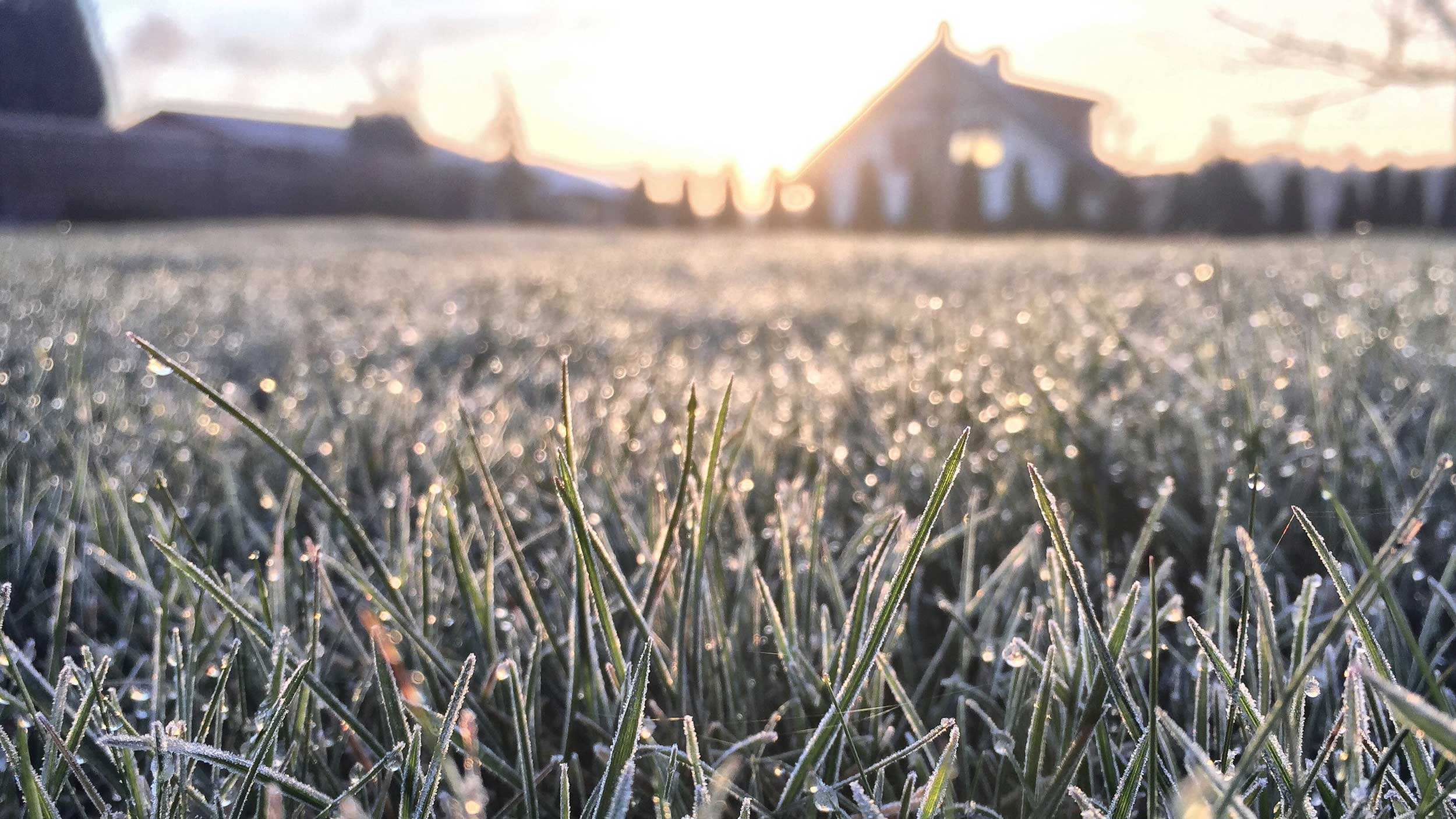As temperatures drop and many of us stash our sticks for winter, superintendents in northern climes are keeping busy, readying their grounds for the cold and snow. GOLF.com asked Len Curtin, superintendent at George Wright Golf Course, in Hyde Park, Mass., about the preparatory steps he takes this time of year, and what lessons there might be for those tending to lawns at home. Here are 7 takeaways:
1. Grow it
“Think of a bear fattening up for hibernation,” Curtin says. That’s what you want to do with turf. About a month before the first heavy frosts, Curtin and his crew let the grass grow longer, raising the height of cuts and reducing mowing frequency.
This serves two purposes. (1) It gives the turf more time to heal, which makes it more resistant to pathogen attack, and (2) It creates more surface area on each blade of grass, increasing the turf’s ability to photosynthesize and store up crucial nutrients: the botanical equivalent of carbo-loading.
At home, Curtin suggests letting lawns grow a half-inch to an inch longer than usual. “Three inches in height is a good target,” he says. Like a properly plumped-up bear, that slightly longer grass will be healthier come spring.
2. Fertilize it
Just because the grass is already storing carbs doesn’t mean you shouldn’t give it more to eat. As winter approaches, Curtin administers a generous dose of organic fertilizer. “But if you don’t have organic, a slow-release commercial fertilizer is fine,” Curtin says.
The fertilizer should have a mix of nitrogen (to promote growth); phosphorous (for disease prevention) and potassium, which, Curtin says, “helps build rigidity in cell walls and acts kind of like anti-freeze.”
Just before the full assault of winter, Curtin also applies gypsum to his turf, which helps reduce potentially damaging sodium buildup in the soil. Homeowners can do the same to safeguard against the winter rock salt that often leaches into lawns from streets and driveways.
3. Hydrate it
Dry falls can lead to difficult winters. When autumn doesn’t bring a lot of rain, Curtin makes sure to up his irrigation. He suggests that homeowners do the same. “You want to make sure your yard is adequately hydrated,” he says. “Severely desiccated turf will not fare well during winter in that condition.”
4. Aerate it and treat it
Winter fungus is no fun, which is why Curtin treats his turf with a snow-mold fungicide. Though this is not a lawn-care must, it doesn’t hurt, and there are granular fungicides meant for home use.
Punching is another optional home practice. In late fall, Curtin and his crew aerate their greens with large, solid tines that penetrate about 9-inches deep. This helps keep drainage channels open on the surface, which prevents the grass from icing over. It also promotes deep-root growth.
“The roots will literally crown down the aeration channels over winter,” Curtin says. Again, this is not a yard-care requirement, but bonus points if you can pull it off.
5. Rake it
Autumn foliage is pretty, but thick layers of it can smother your grass while creating the cold and damp environment that snow molds love. Curtin and his crew go to great lengths to rid their course of leaves, and you should do the same, whether by raking them up, blowing them away or finely mulching them into the soil.
6. Tarp it
Curtin and Co. topdress their greens with a heavy layer of sand to insulate the crowns against the frigid cold, then spread a woven fabric over the putting surfaces as an added measure of protection. Though no one’s expecting you to sand your lawn ahead of winter, tarps aren’t a bad idea in especially harsh climates. Just be sure to use the kind designed specifically for lawns, and to remove it at the first sign of spring.
7. Don’t bury it
Grass can breathe under a natural layer of snow. But heavy piles of snow are a different story. “Down where it meets the turf, the snow will melt then refreeze and turn into ice, which can suffocate grass,” Curtin says.
How much snow is too much? Different turf varietals are more tolerant than others, and Curtin says he doesn’t have a hard-set guideline. “But I think a good rule of thumb is three or more feet, in place, for more than 80 days consecutively — that can be damaging,” he says.
So keep your shovel handy. But beware of piling snow in driveways and walkways bordering your yard, as the road salts and de-icing chemicals that many people use are bad for grass, and they’ll seep into your lawn as the snow melts.
